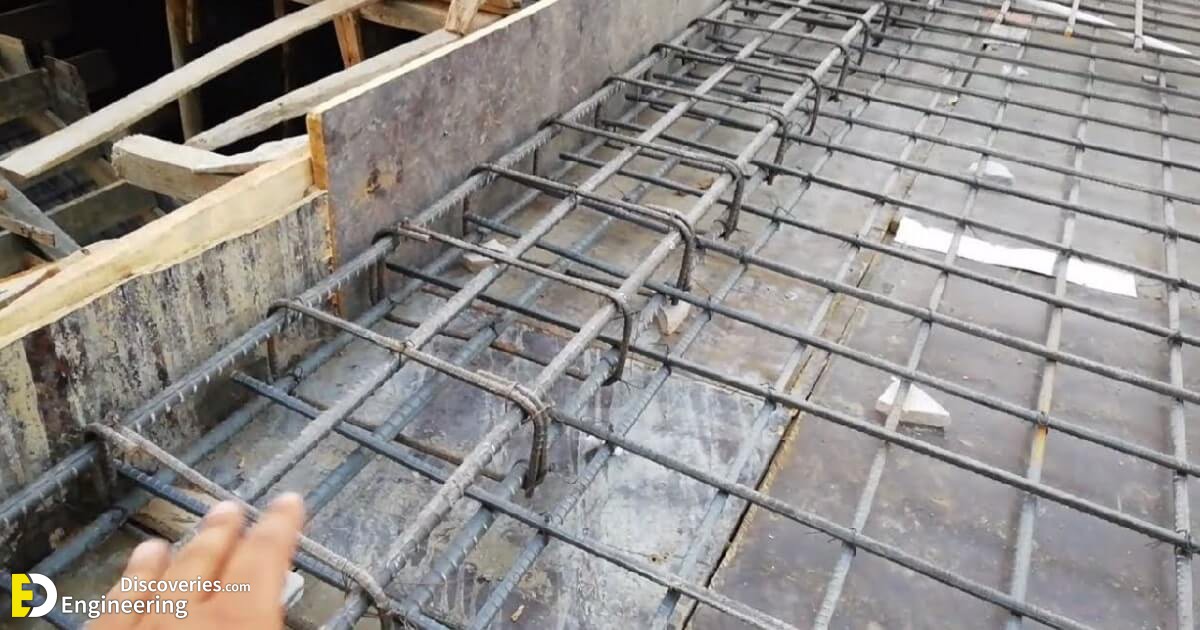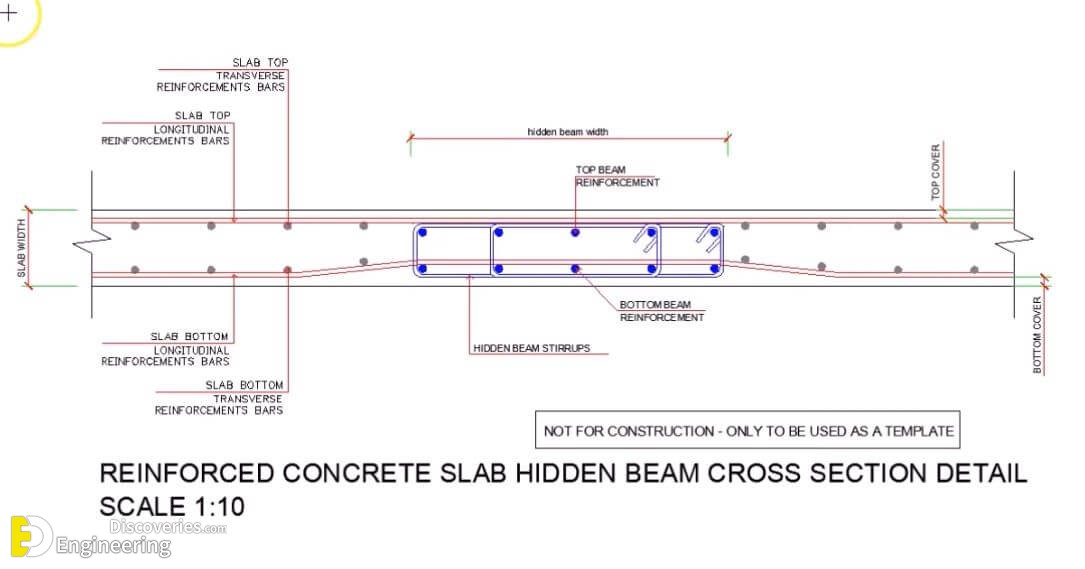Hidden beams can be defined as the beams whose depth is equal to the thickness of the slab. Hidden beams are also known as a concealed beam.
Beams normally have a depth larger than the slab it is lifting, however, hidden beams have the same depth as the slab, but it is reinforced separately from the slab, having stirrups and longitudinal bars just as a normal beam. Hence they can’t be seen after fulfilling it with concrete. They are hidden in the slab.
Hidden beams are generally inserted within the suspended slabs where slab thickness is considerable. The concept of a concealed beam originated from a flat slab concept. They are more applicable to commercial buildings.
Purpose of hidden beams
Hidden beams are used for the following purposes
1- To disperse loads on the supporting slab.
2- To break a wide panel of the slab to considerable size.
3- To achieve maximum floor height.
4- To clear the way for electromechanical ductwork.
5- To improve architectural aesthetic appearance by providing a neat and levelled ceiling surface.

Advantages of hidden beam
1- It saves floor height clearance.
2- It allows if brickwork needs to be constructed over the slab.
3- It is economical as it saves the cost of materials, formwork, and labour.
4- It gives a better aesthetic interior appearance.
Disadvantages of hidden beam
Structurally it creates a spanning problem, as spans for structural support are at a right angle to each other. This means one slab structurally rests over the other.



